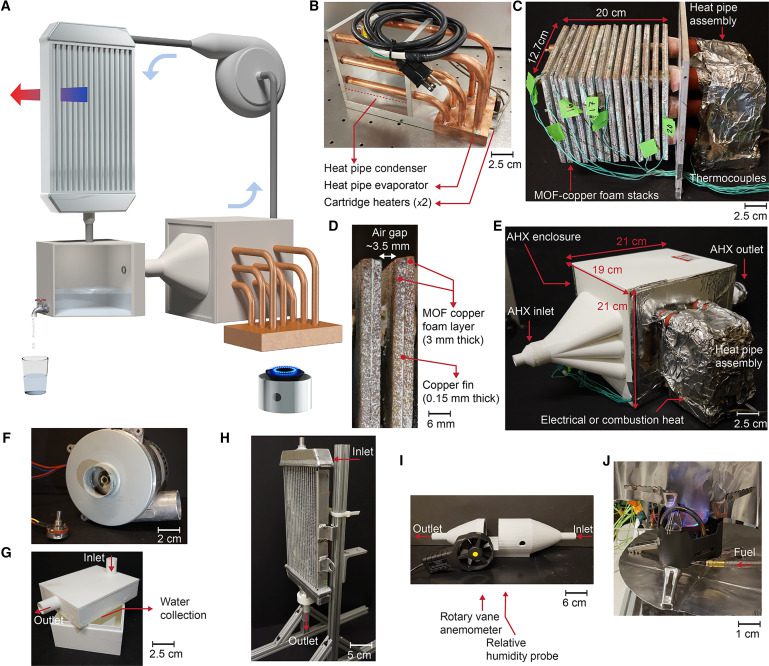- U of U engineers develop compact, rapid-cycling, fuel-fired atmospheric water harvesting device.
- Prototype uses adsorbent materials to draw water molecules from non-humid air.
- Device could provide clean drinking water in arid areas.
- Potential applications for military and civilian use.
July 24, 2024 — Researchers at the University of Utah have unveiled a new prototype device that can extract drinking water from the air, even in arid environments. The compact, rapid-cycling, fuel-fired device uses adsorbent materials to draw water molecules out of non-humid air, then applies heat to release those molecules into liquid form.
have unveiled a new prototype device that can extract drinking water from the air, even in arid environments. The compact, rapid-cycling, fuel-fired device uses adsorbent materials to draw water molecules out of non-humid air, then applies heat to release those molecules into liquid form.
How It Works.
The device uses a type of hygroscopic material called a metal-organic framework (MOF) to collect water molecules. “They can make it specific to adsorb water vapor from the air and nothing else,” said Sameer Rao, senior author of the study and an assistant professor in the John and Marcia Price College of Engineering .
.
The MOF panels collect water as air is drawn through. The water molecules are trapped on the surfaces of the material in a reversible process. “What’s special about these absorbent materials is they have just an immense amount of internal surface area. There’s so many sites for water molecules to get stuck,” said Nathan Ortiz, the study’s lead author.
To release the water, heat is applied using a standard-issue Army camping stove. This works because of the exothermic nature of the water-collecting process. “As it collects water, it’s releasing little bits of heat. And then to reverse that, we add heat,” Ortiz said. “We just put a flame right under here, anything to get this temperature up. And then as we increase the temperature, we rapidly release the water molecules. Once we have a really humid airstream, that makes condensation at ambient temperature much easier.”
Potential Applications.
The research was funded by the DEVCOM Soldier Center, a program run by the Department of Defense. The Army is interested in the technology because it could provide soldiers with a way to generate water on demand in remote areas.
The researchers have also filed for a preliminary patent for the technology, which could have a wide range of civilian applications. “We think in terms of water consumption of a household for drinking water per day. That’s about 15 to 20 liters per day,” Rao said.
In this proof of concept, the prototype achieved its target of producing 5 liters of water per day per kilogram of adsorbent material.
Future Development.
The researchers continue developing the technology and hope to make it even more efficient and affordable. They believe that it has the potential to provide clean drinking water to billions of people around the world who face chronic shortages.
Research Paper.
The study, “Compact rapid cycling fuel-fired atmospheric water harvesting device for all-day water production ,” appeared July 22 in Cell Reports Physical Science. Funding came from the DEVCOM Soldier Center
,” appeared July 22 in Cell Reports Physical Science. Funding came from the DEVCOM Soldier Center and the National Science Foundation
and the National Science Foundation . (The top image is the Schematic of the CRCF prototype and photographs of the constituent components that appeared in the study.)
. (The top image is the Schematic of the CRCF prototype and photographs of the constituent components that appeared in the study.)

